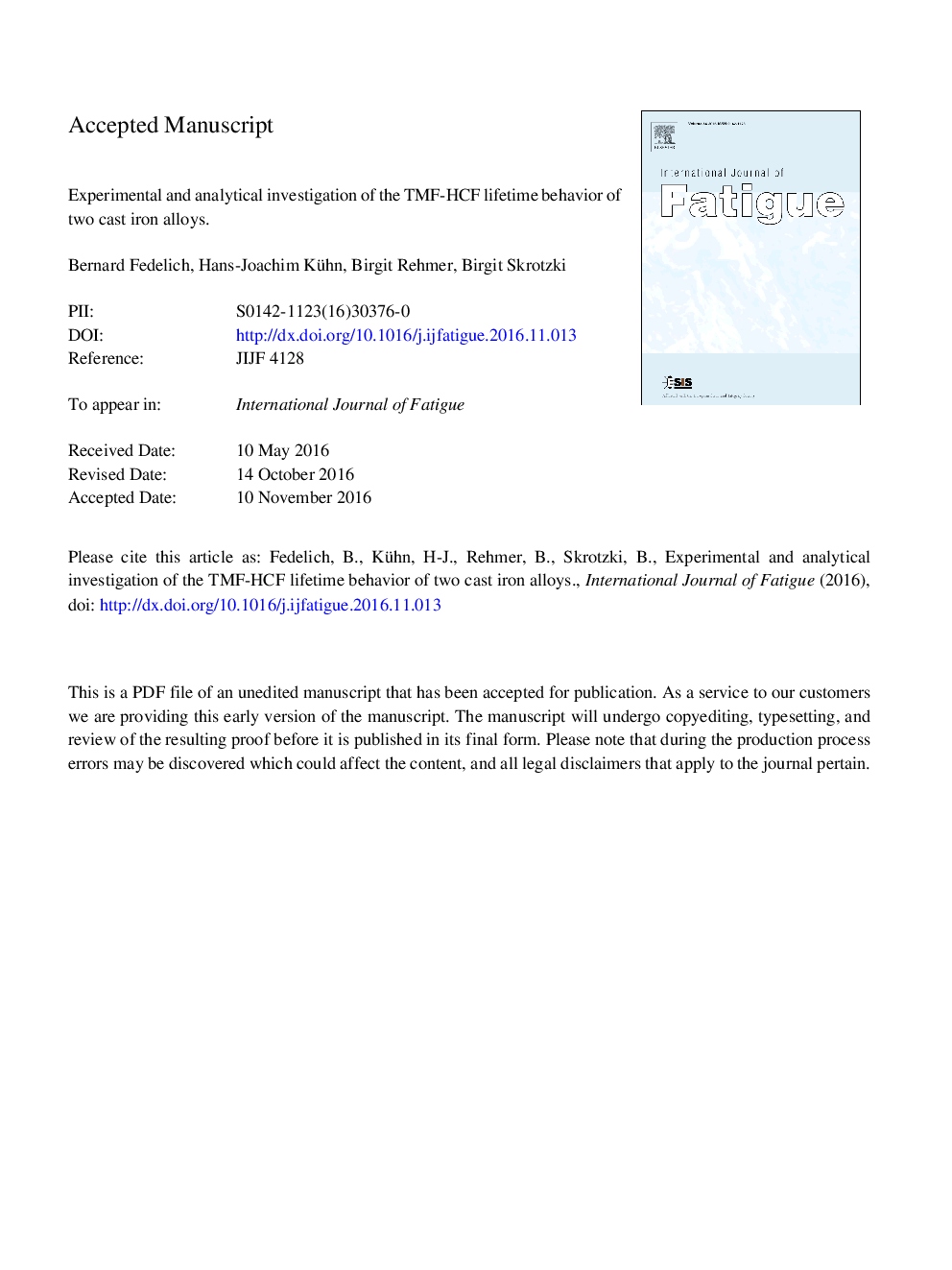| Article ID | Journal | Published Year | Pages | File Type |
|---|---|---|---|---|
| 5015188 | International Journal of Fatigue | 2017 | 36 Pages |
Abstract
The combined loading Thermomechanical Fatigue (TMF) with High Cycle Fatigue (HCF) has been experimentally investigated for two cast iron alloys. Both alloys contain globular graphite nodules but the first one has a ferritic structure while the second one has an austenitic crystal structure. In particular, the influences of the HCF frequency, of the HCF loading amplitude and of the location of the superposed HCF cycles have been investigated. It was observed that the HCF frequency has a limited impact on the fatigue life. On the other side, the HCF-strain amplitude has a highly non-linear influence on the fatigue life. The experimental results can be understood in terms of a fracture mechanics based damage mechanism: Cracks quickly initiate due to the TMF loading and the growth of the cracks up to a few mm controls the fatigue life. If HCF-loading cycles are superposed, cyclic crack propagation dramatically accelerates after a threshold has been reached. This threshold is regarded as controlling the fatigue life reduction. The previous ideas have been expressed in a model that can be very simply applied to estimate the fatigue life reduction ratio due to the superposed HCF cycles. It only contains two adjustable parameters and can be combined with any TMF life assessment model.
Related Topics
Physical Sciences and Engineering
Engineering
Mechanical Engineering
Authors
Bernard Fedelich, Hans-Joachim Kühn, Birgit Rehmer, Birgit Skrotzki,
